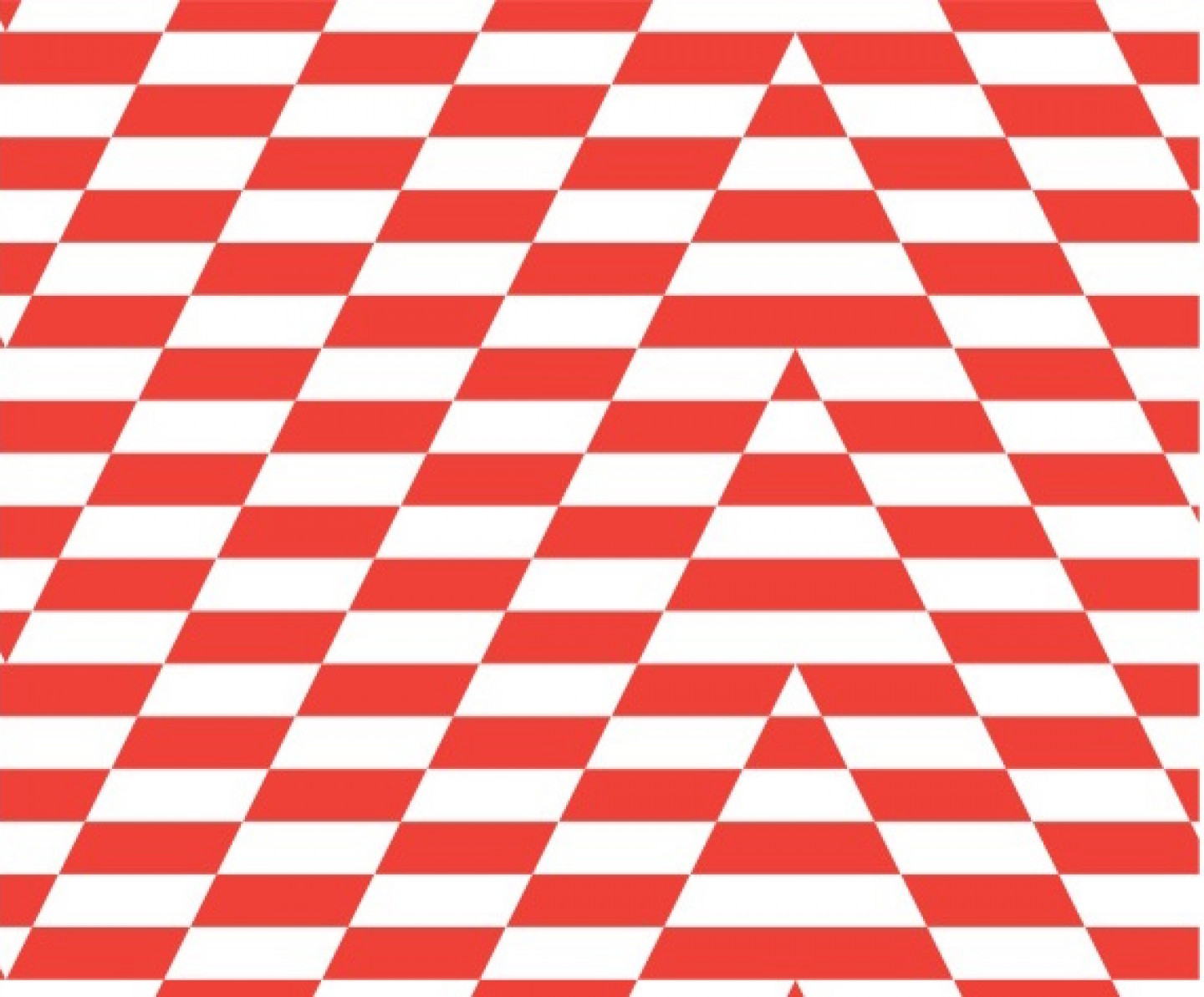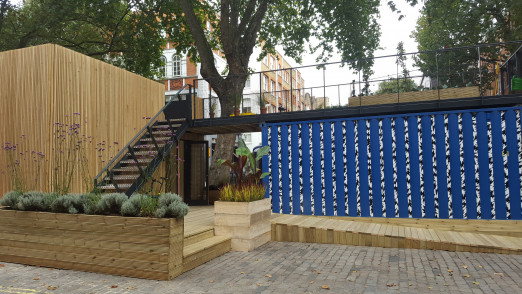Wakako Kishimoto and Mark Eley of fashion design company Eley Kishimoto, push textile design into unorthodox spaces. Their show for the Autumn/Winter collection during 2001 London Fashion Week was played out not on the catwalk but as a series of tea-parties. Easy to see how providing the internal and external design for the container home of A New House for London sits with their experimental vision.
They worked with A New House for London’s architect Carl Turner on the shipping container project Pop Brixton, a project whose timing synced with their own shift in lifestyle. “Myself and Wakako have been travelling around the world for the last 20 years for our business,” says Mark Eley, “but we've been travelling less over the last two or three years, concentrating on things which are a lot more domestic or closer to home.”
A New House for London resonates very immediately with their experience as London parents, concerned about their own kids about to leave home. “They can’t afford to get a one-bedroom flat in South Croydon. If I can find them a plot of land where I can get a property of the design value of what is potentially coming out of this container project, I’ve got friends who want to live in it already from seeing photos I’ve shared. There is something fairly realistic here, if they can get the manufacturer of these containers plus the buy-in of other places where people are willing to house these on, then I think it’s a viable alternative for affordable housing within London.”
Fashion and archietcture
Eley Kishimoto have form working with architects, exploring graphics, pattern and materials. In 2004 they worked with 6a architects on an installation called Frill City at the neo-classical mansion Belsay Hall. In 2005 they worked with the same architects again in an installation in Old Street, a 6.3m tower called Hairywood, described by the Financial Times as, “a suitably surreal moment of architectural delight.” In 2014 they were shortlisted with Ramboll and architect Rick Mather on the proposal for the Olympicopolis and are currently working with Rick Mather and Almacanter on the development of Centrepoint. “It’s about marketing and identity, giving a project or a plan a soft identity through aesthetics,” says Eley.
In A New House for London they’ve produced a range of work. For the flooring, they’ve provided carpets, “one is a carpet from an old collection which is inspired by our next door neighbor, an Afro-Caribbean piece, then a new more modern piece which hasn’t been applied anywhere.”

They applied wallpaper to the outside façade, “to take it away from just being a metal container but enhancing that slightly, because we are just using the folds of the metal. Then some soft furnishing materials to give it a warmer feel.”

Builder's son
Eley’s facility and curiosity with different materials is partly rooted in construction. “My father was a builder, a site-foreman, a bricklayer,” he explains. “I’ve grown up on building sites and I’m quite handy. It’s something which has helped me to do my own practice where I like to get involved with physical materials, instead of being a designer on CAD or on paper, we’ve set ourselves up with the chemistry of textiles and that then extended itself to looking at the application of pattern onto alternative materials.”

Equally, Eley sees the unfolding and repetition of pattern in their work as echoing the structure of architecture. The commercial reality of a building means the construction unfolds as, “repetitive units or repetitive products combined to make a larger object. That is exactly how we make our patterns for textiles or for surface. It is a small unit that can be scaled to any particular scale, large or small, and it’s economical in its use in terms of the way more units can cover the whole surface of the world. It’s exactly the same principle in the technical thinking of building blocks.”
The space provided by the container house is not such an alien concept for Eley either. “My wife’s Japanese so it’s very simple for me to understand living in such condensed spaces. When we go to Japan our families or friends live in such spaces.” A New House for London makes the most of its improvised context and setting. “I love the idea that they are engaging with the outside space, you have a walk between units. That’s very wholesome in terms of your relationship to the world and the weather. Which doesn’t exist in apartments.”
So what lessons have been learned from working on A New House for London that could be applied again or improved on for similar projects? “I would like to live in it and assess it that way, then start to make it more personal, to see how I can bring my own self-identity to my living space. People can then take ownership of it themselves, rather than impose design on people’s life. I’d love to convince them to drop it in my garden because I’ve got a place ready for it to be positioned – test it out with an older demographic!”
Read about Bruno Lacey's Horticultural work on A New House For London



